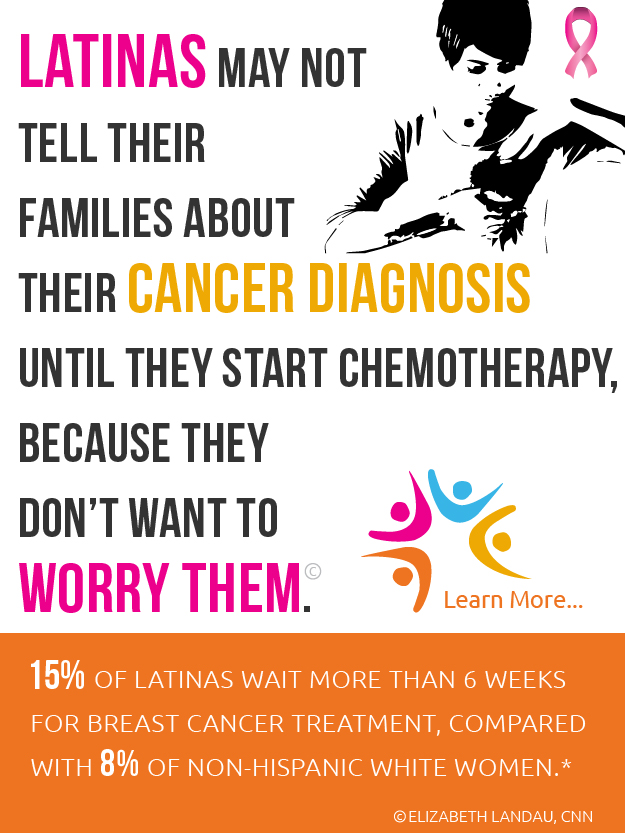
When It Comes to Controlling Diabetes in the Hispanic Community, Education May Not Be Enough
11/25/2013 01:09PM | 9501 viewsBy Raynald Samoa, MD
World Diabetes Day was November 14, just as a new report from the International Diabetes Federation put estimates of those around the world with the disease at 382 million people. In the United States, eight percent of the population, almost 26 million people, is living with diabetes – with another 79 million showing signs of being pre-diabetic.
As bad as the problem is in the general population, it seems to be taking a particular toll on minority groups, and especially U.S. Hispanics. According to the U.S. Department of Health and Human Services Office of Minority Health, thirteen percent of the community – more than 3 million Latino adults – is living with diabetes.
Education and outreach to the Latino community seems to be falling short, despite the best efforts of organizations such as the Latino Diabetes Association and other non-profits. Compared to non-Hispanic whites, Hispanics are more than one and a half times likely to develop the disease, and their death rate from diabetes-related causes is 50 percent greater.
Language can be a barrier, and cultural obstacles can present even greater hurdles, but beyond these issues we’re finding that education in and of itself may not be enough when it comes to getting people to take care of their diabetes or pre-diabetic conditions. The prevailing notion – that people would change bad habits once they learned about the connection between proper nutrition/exercise and their important role in preventing or controlling diabetes – is proving to be little more than wishful thinking. As important as education is, once it is obtained not everyone uses it to their advantage or follows their doctor’s advice.
Unfortunately, just because we know something to be true, doesn’t mean we’re necessarily going to apply it in our daily lives – even in serious matters of health, longevity and quality of life. Smokers are perhaps the most obvious example, but we’re all guilty to some degree when it comes to making diet, exercise and other lifestyle choices that affect our health and risk for chronic disease. This is why we are seeing cases of diabetes running rampant – around the globe, across the country, and now throughout the Hispanic community.
Though it is a worldwide epidemic, we have to start overcoming the education conundrum at the local community level – by drilling down to the nuances of how and why people make decisions. We have to learn the patterns they use to understand the world, because these patterns inform all of their decisions – from small everyday choices like what to have for breakfast to major decisions concerning their health and the steps and lifestyle changes they are willing to make to preserve it.
The catch-22 is that the disease itself can interfere with a person’s ability to make good decisions. When your blood sugar is low, the brain’s capacity to deal with information is also low. But the opposite is not necessarily true. When the diabetic experiences high blood sugar, there’s a hitch: the body does not use blood sugar well, so it doesn’t always go to the brain as it should. It’s like having a stack of wood that you can’t light because you don’t have a match.
Beyond the effects of the disease on the individual, you then have to understand what other factors motivate people as they make decisions. For example, in the Latino community, faith-based decision making may come into play. I saw this firsthand with my own father. Telling him he needed to lose weight never seemed to do any good coming from me, a doctor. But it was a different story when his pastor told him to lose weight, because the pastor’s values were so closely aligned with his own.
This is also an example of the shortcuts people may take in making their decisions, another factor to consider when looking for their underlying motivations. In the increasingly stressful and rapidly moving society of today, success depends on making decisions quickly with a finite amount of information – with your brain making up the rest and taking other shortcuts to fill in the blanks. Not exactly the best decision making process when it comes to your health, where shortcuts can lead to decisions made in haste and without all the facts.
With that in mind, it’s our job as healthcare professionals to help people avoid shortcuts when it comes to making decisions about their health and well-being. And more than ever, that means understanding what drives those in the Hispanic community as they make decisions, as Hispanics are on an upward trajectory that will have them representing one-third of the country by 2050. As such, whatever is happening in the Hispanic community is a preview of what we can expect in the broader U.S. population. And the lessons learned here are ones that will have global impact, as diabetes rates continue to rise worldwide wherever unhealthy food is cheaper and easier to access.
One such lesson: Since education is not always enough to change behaviors, find common ground with patients and set concrete goals. For example, if someone has to go on insulin because of their diabetes, find out what would motivate them to want to stay healthy. Are they the main breadwinner for the family? Do they hope to see their children graduate? Are they taking care of aged parents? Do they yearn to hold their grandchildren one day?
If you still meet resistance to treatment, dig deep to find the root cause of their concerns. Although not exclusive to Hispanics, many in the community have a fear of injecting insulin. This fear may seem irrational until you drill down to discover how they make their decisions. Hispanics in particular may look at chronic disease as a manifestation of other problems in their lives, with their families, etc. In other words, diabetes is a manifestation of stress – and they may not be too far off. But it’s still a shortcut approach to making decisions about their health that’s not necessarily based on fact.
Their idea of a cure might be to mend a broken relationship, and injecting insulin is miles away from that approach. Once you understand this, you can offer a solution that aligns with their values. Acknowledge that managing stress is part of the treatment – but it’s not the whole treatment. Reiterate their goals and position treatment as the plan, insulin as a tool that they control, to reach those goals.
Ideally, insulin will be a last resort. Here are some of the best ways to manage diabetes – or prevent it in the first place.
- Manage your stress. We all have busy schedules and are constantly trying to do more with less. But when you let stress take over your life, it’s hard to control anything else. You lose your will power and start to make questionable lifestyle choices – choices that can lead to more stress in the form of poor health and chronic disease.
- Make better food choices. When we’re on the run all day, our meals are typically “grab and go.” These tend to be unhealthy food choices, as our capacity to make sound decisions is used up on other activities throughout the day. Make small, incremental improvements to your diet. Decrease the percentage of processed foods you consume. Add more fruits, vegetables and protein to your daily regimen. Cook more meals at home and use that time to relax and unwind (and de-stress!)
- Become less sedentary. Ironically, we seem to be moving less even as our phones and other devices become more mobile. When it comes to exercise, anything is better than nothing. Start slow and start walking. Don’t get discouraged if you can’t live up to the latest recommendations. If you don’t have time for 30 minutes, do 3. New studies are beginning to indicate that short bursts of exercise may be just as good as more prolonged activity.











Post your Comment
Please login or sign up to comment
Comments